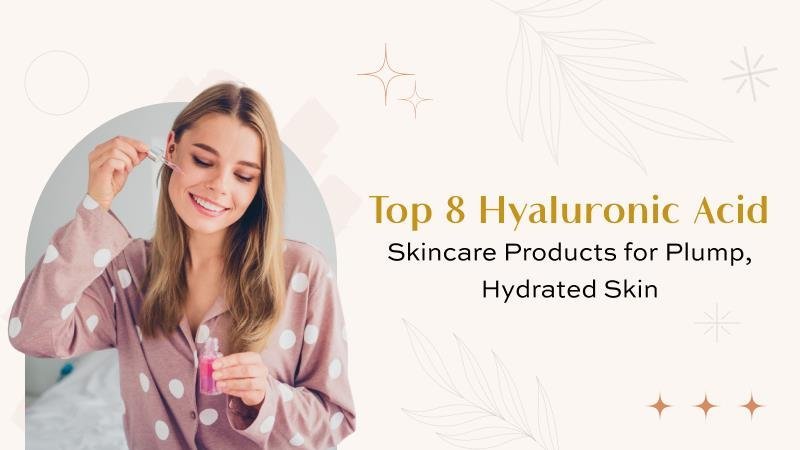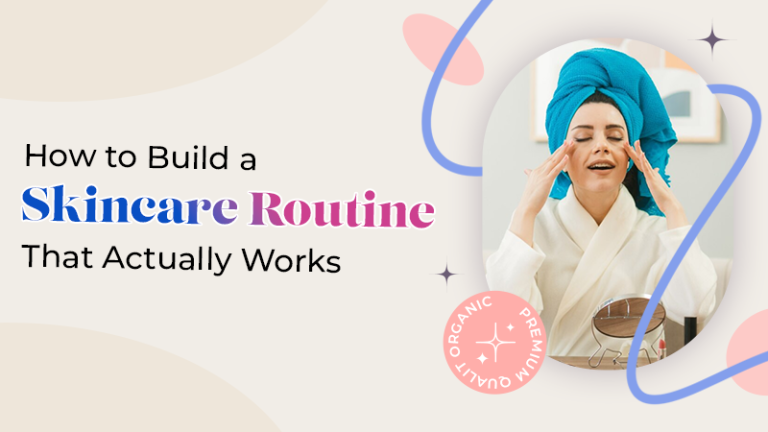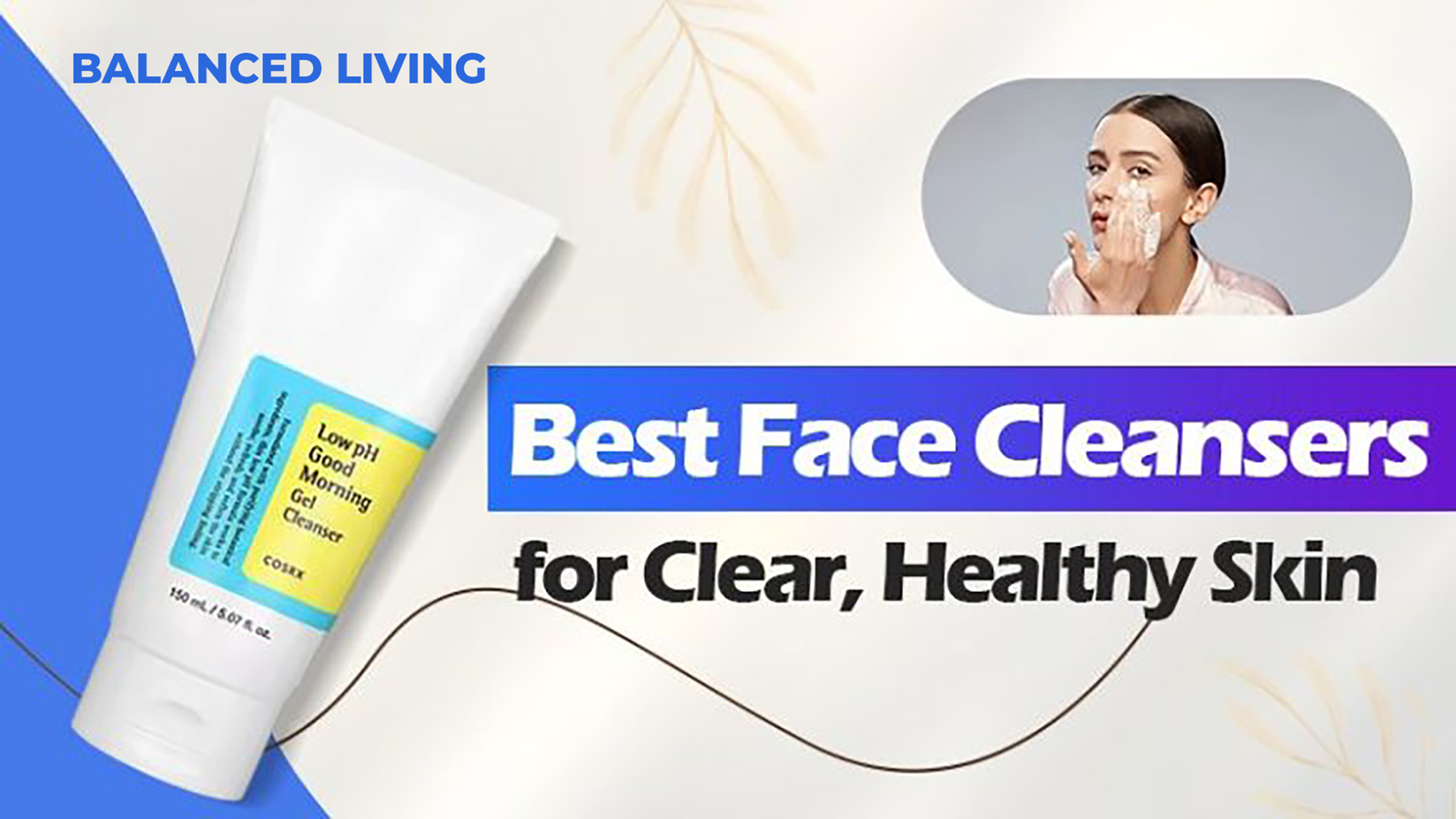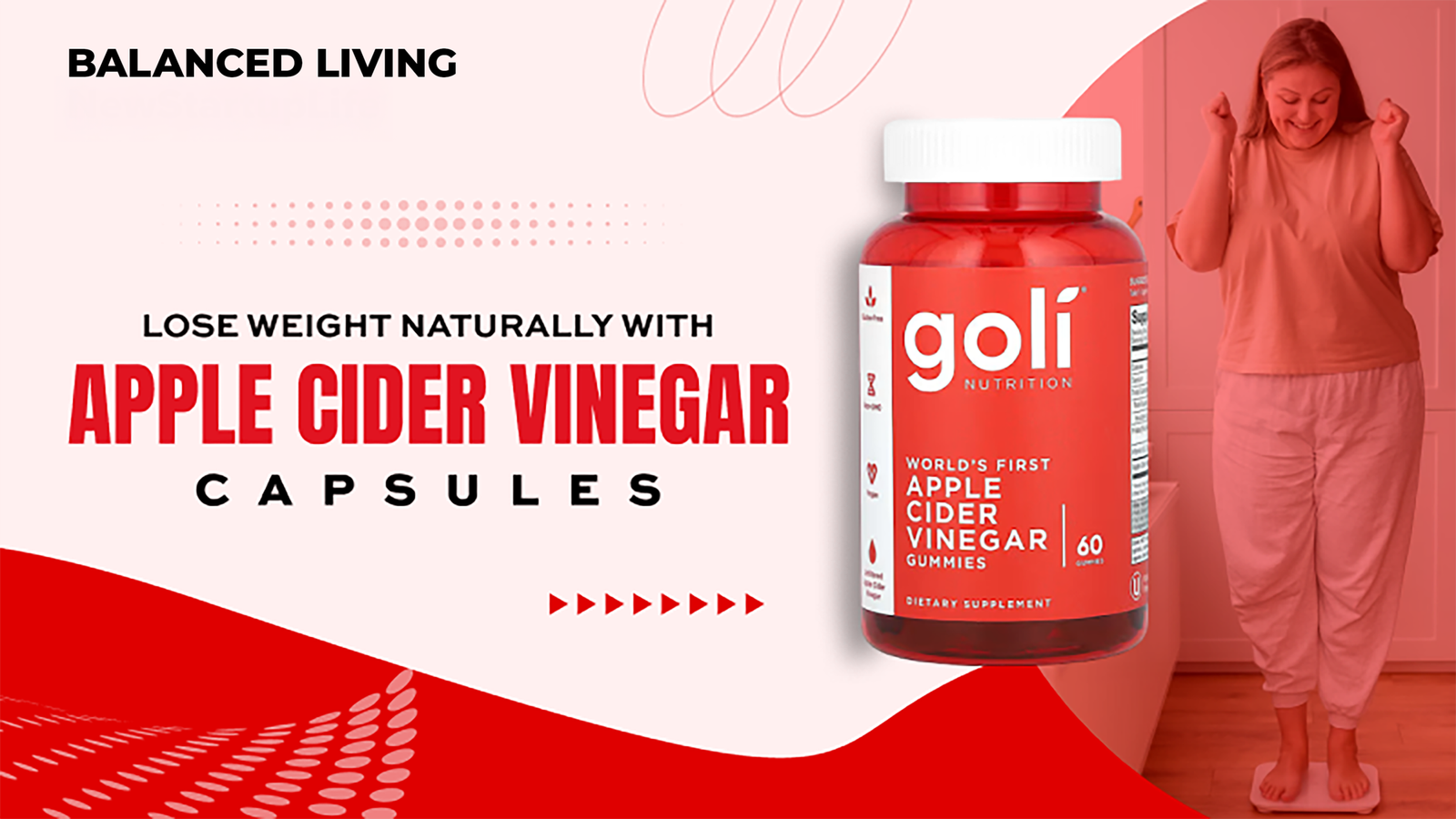When it comes to beautiful, radiant skin, there is no magic product or overnight fix. Great skin isn’t a miracle that happens overnight. Although some people are born with that smooth, glowy situation, what about the rest of us? It’s a process—a messy, trial-and-error kind of thing.
You wash your face. Sometimes you forget. Perhaps you pick up a moisturizer that smells nice in the store, but it doesn’t do much for your skin. Sunscreen? You know it matters, but who remembers it every day? (Especially when it’s raining or you’re inside… but yes, turns out it still counts.)
Anyway, the point is—your skin’s keeping score. And it doesn’t just care about products. Your skin is a reflection of what you are living, visiting, and eating—the quality of your sleep, hydration, nutrition, and many other factors.
This guide? It’s where we break it all down. Basics, mistakes, and stuff you’ll wish you knew sooner. Balanced Living is your go-to guide for skincare tips, routines, and product insights—all in one place.
Let’s Get Into It!
Understanding Your Skin: The First Step to Radiance
So, before you go buying five new skincare products, take a minute to figure out what kind of skin you’re working with. Like—oily, dry, or something in-between? This part is often overlooked, but it matters a great deal. Otherwise, you end up using the wrong stuff and wondering why your face is freaking out.
Let’s break it down:
- Normal – if your skin’s just chill, most of the time. Not dry, not oily. Lucky you.
- Dry – feels tight after washing and may become flaky. Super annoying in winter.
- Oily – forehead’s shiny before noon, and pimples seem to live rent-free.
- Combo – oily on your nose and forehead, but dry-ish on the cheeks.
- Sensitive – if your skin gets red or irritated by, like, anything new.
Once you get a grip on that, you’ll have a better shot at actually finding stuff that works. Otherwise, it’s just guessing, and your skin deserves better than that.
Step 1: Cleansing—Where Every Routine Begins
You know how sometimes your skin just feels off and kind of gross by the end of the day? That’s mostly just stuff sitting on it. Like, all the oil, the dirt, makeup if you wore any, even just stuff from your hands or being outside—it builds up fast. And if it’s not washed off properly, it sticks around and clogs everything up. Washing your face might seem basic, but if it’s not done right, everything else—moisturizers, serums, whatever—won’t really work.
Best thing is to keep it simple. No boiling-hot water. Just lukewarm. Something gentle that doesn’t leave your face feeling weird and tight after. If your skin gets oily, something foamy usually helps. If it gets red or dry easily, something creamy or mild is better. Overwashing makes things worse, not better. Morning and night is usually enough; no need to overdo it.
That’s it. Nothing fancy. Just getting this part right makes a bigger difference than most people realize.
Step 2: Toning—Rebalance and Refine
Toner’s kind of the step that most people either skip or don’t really get. It sounds unnecessary until your skin starts acting up and suddenly it makes sense. After washing your face, the skin can feel a little off — like not dry exactly, but not totally calm either. That’s where toner helps. It’s like a reset. Not a big dramatic thing, but a small step that makes everything else feel smoother.
If the skin’s dry or kind of sensitive, something with rose water or aloe feels nice. If breakouts are a problem, the ones with light acids, like salicylic or glycolic, can help clean things out gently. No need to soak a cotton pad either — just a few drops and press it in.
It’s not a magic fix, but when used consistently, it kind of just helps things feel more balanced. Less redness, better texture. Nothing fancy. It just helps the rest of the routine sit better on your skin.
Step 3: Serums—Targeted Treatments That Deliver
Serums are where things get a bit more focused. They’re not like your regular moisturizer—they’re thinner, lighter, but packed with ingredients that actually do something. This is the part of the routine where you can target whatever’s bugging you, whether it’s dullness, dryness, fine lines, or breakouts. It goes on after toner, before anything heavier.
Different serums work for other things. Vitamin C is great for making skin look brighter and helping with issues like uneven tone. Hyaluronic acid’s more about hydration—pulling water into the skin and making it feel a little plumper. Niacinamide helps with redness or that uneven texture. Retinol is a heavy-hitter for lines and breakouts, but it can be strong, so it’s best to use it at night. And then peptides… they just support the skin overall, especially as it ages.
You don’t need to drown your face in it. Just a few drops, press it in gently, face and neck. That’s enough. People tend to overdo it with serums, but honestly, with these, less really is more.
Step 4: Moisturizing—Seal the Deal
Moisturizer’s one of those things people either love or totally skip, especially if the skin feels oily. But it’s not just about adding moisture — it’s about sealing everything in. All the stuff you just used? Cleanser, toner, serum — moisturizer helps hold it in place and keeps the skin barrier happy. Even oily skin needs it, just not the super-thick stuff.
The type of moisturizer really depends on what your skin’s doing. Gel or oil-free ones feel better for oily or breakout-prone skin. If the skin’s dry or feels tight a lot, creamier formulas tend to work better. Combo or normal skin? Something lightweight usually does the trick. And if the skin gets red or irritated easily, going fragrance-free and non-comedogenic helps a lot.
There are a few ingredients that just feel good across the board — ceramides, glycerin, aloe vera, squalane… stuff that hydrates without feeling heavy. Just apply it after your serum, morning and night. Doesn’t need to be fancy — just something your skin actually likes. Hydrated skin always ends up looking better. It’s smoother, bouncier, and kind of just glows a bit more naturally.
Step 5: Sunscreen—The MVP of Skincare
People think sunscreen’s for when it’s hot or sunny, but no, it’s not just for those days. Even when the sky’s gray or you’re just near a window, your skin still takes in that UV. That’s what causes damage long-term.
Like, lines, spots, rough patches, stuff that just kind of shows up one day. it adds up. And, worse than that, there’s the cancer risk too. Nobody likes hearing it, but it’s true. Using sunscreen daily is just one of those things that helps more than you realize.
A broad-spectrum SPF 30 is usually fine. Not about slathering on a ton, just enough, consistently. there the two types—mineral, which kind of sits on top, and chemical, which soaks in and feels lighter. Some people like one, some the other, whatever works. So, do it after moisturizer. Takes like 20 seconds. Worth it.
Why Sunscreen Is Important
People think sunscreen’s only needed when it’s sunny, but sun damage doesn’t wait for bright days. UV rays still get through even if it’s cloudy or you’re just sitting near a window. Over time, this can cause wrinkles, spots, and sagging.
Sunscreen helps stop that. It also helps maintain a more even skin tone and prevents annoying patches or dark spots from worsening; it also lowers the risk of skin cancer, which is a significant benefit.
Additionally, if you’re spending money on moisturizers and serums, they work more effectively when your skin isn’t being exposed to the sun all day. SPF isn’t extra; it’s part of the basics. Not just for vacations. Just part of your daily stuff, like brushing your teeth.
Night Routine — Chill, Repair, Let Skin Breathe
Mornings are more about protecting your skin, but at night, it’s the opposite—this is when your skin does the work of healing. It’s more open, almost as if it’s ready to soak in everything and recover from the day’s experiences.
Usually starts with cleansing. For instance, if you wear sunscreen or makeup, you’ll want to go in twice. First, use an oil-based product to break it all down, then follow with your regular face wash to actually clean it off. It makes a difference, especially if you’ve been outside or layered up products.
After that, a hydrating toner or essence helps replenish moisture and sets the tone. Serums come next—this is where stuff like retinol or peptides work best. Or if your skin is feeling irritated or tired, something calming like centella or chamomile can be beneficial too.
Then there’s the night cream part. This one’s thicker than your daytime stuff. More nourishing, more focused on repair. Some people opt for sleeping masks instead—essentially a leave-on treatment.
And if you’re using stronger products like exfoliants or retinoids, nighttime is the best time. Just make sure you don’t skip sunscreen the next morning. That’s non-negotiable, especially after using anything substantial the night before.
Quick Skincare Reminders for That Long-Term Glow
- Don’t skip sunscreen — even if it’s cloudy or you’re indoors near windows. UV rays don’t care.
- Stick to your routine. Real results take time — usually at least 4 to 6 weeks.
- Go easy with active ingredients. Mixing too many can irritate your skin instead of helping it.
- Pay attention. If something feels off — burning, breaking out, too dry — your skin’s trying to tell you something.
- Always patch test new products. Better safe than sorry.
- Swap your pillowcase for one made of silk or satin. It’s gentler on skin and helps prevent moisture loss.
- Keep things clean—especially your phone screen and makeup brushes. They collect grime quickly and can irritate your skin.
Final Thoughts!
You don’t need a perfect skincare setup to see changes. Honestly, it’s more about just knowing what your skin needs and sticking to the basics. Not everything will work for everyone, and that’s fine. Some days your skin glows, other days it doesn’t, and that’s normal too. Give it time. Stay consistent.
Trends will come and go, but being kind to your skin and not overthinking every little step. That’s what makes the difference in the long run.















